Abstract
Evidence has been obtained for the presence in filtrates of 3-day-old cultures of the fungus Rhizopus stolonifer grown on potato-dextrose medium of both high molecular weight and low molecular weight elicitors of the production of the phytoalexin casbene in cell-free extracts of castor bean (Ricinus communis L.) seedlings. The high molecular weight elicitor activity was purified by means of gel filtration chromatography. Both protein and carbohydrate are associated with the most purified fraction containing elicitor activity. The elicitor is inactivated by treatments at 60 C or higher temperatures for 15 minutes. The molecular weight of the purified elicitor was estimated from gel filtration chromatography in 10 mm Na-phosphate (pH 7) to be 30,000 ± 5,000. Treatments of the purified elicitor fraction with either sodium periodate or the nonspecific protease preparation, pronase, substantially reduced its activity as an elicitor of casbene production. On the basis of these properties it is concluded that the elicitor is most likely a protein and may be a glycoprotein. It is estimated that 2 × 10−8 m elicitor gives about a 14-fold increase in casbene synthetase activity in extracts of treated split seedlings in comparison with controls. This corresponds to about 50% of the maximal activity obtainable in this assay system developed to measure elicitor activity.
Full text
PDF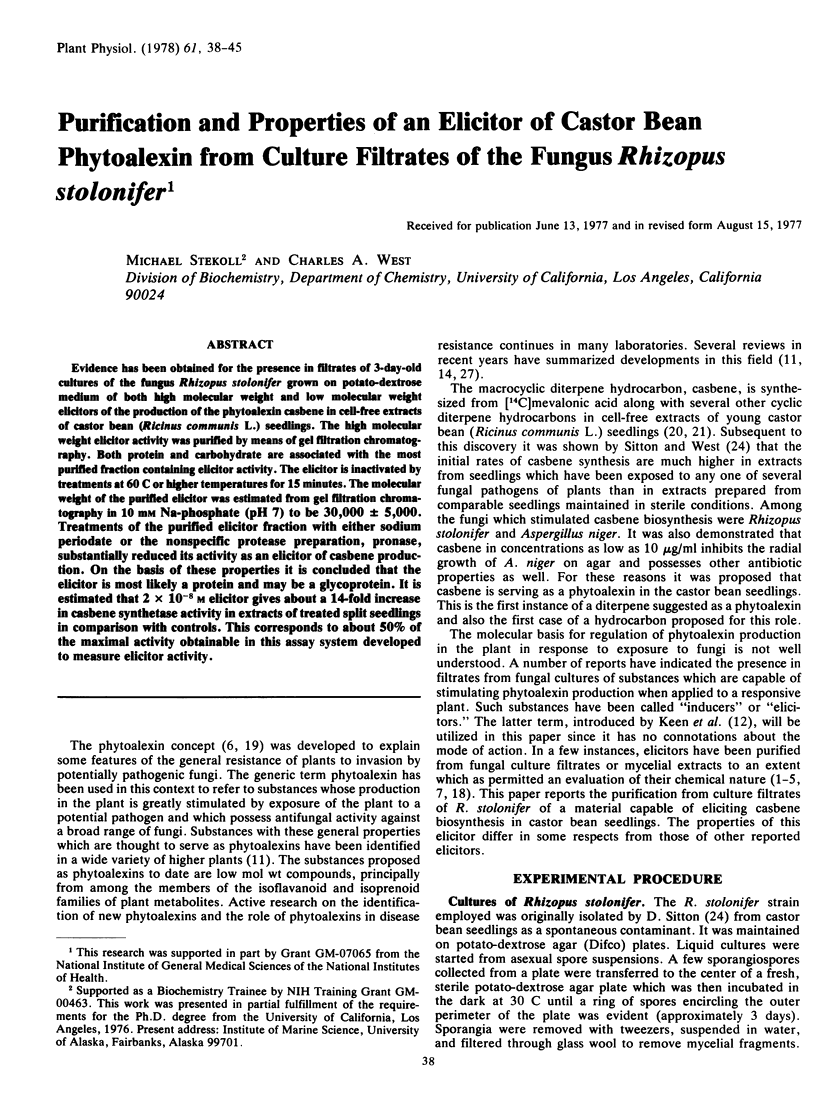
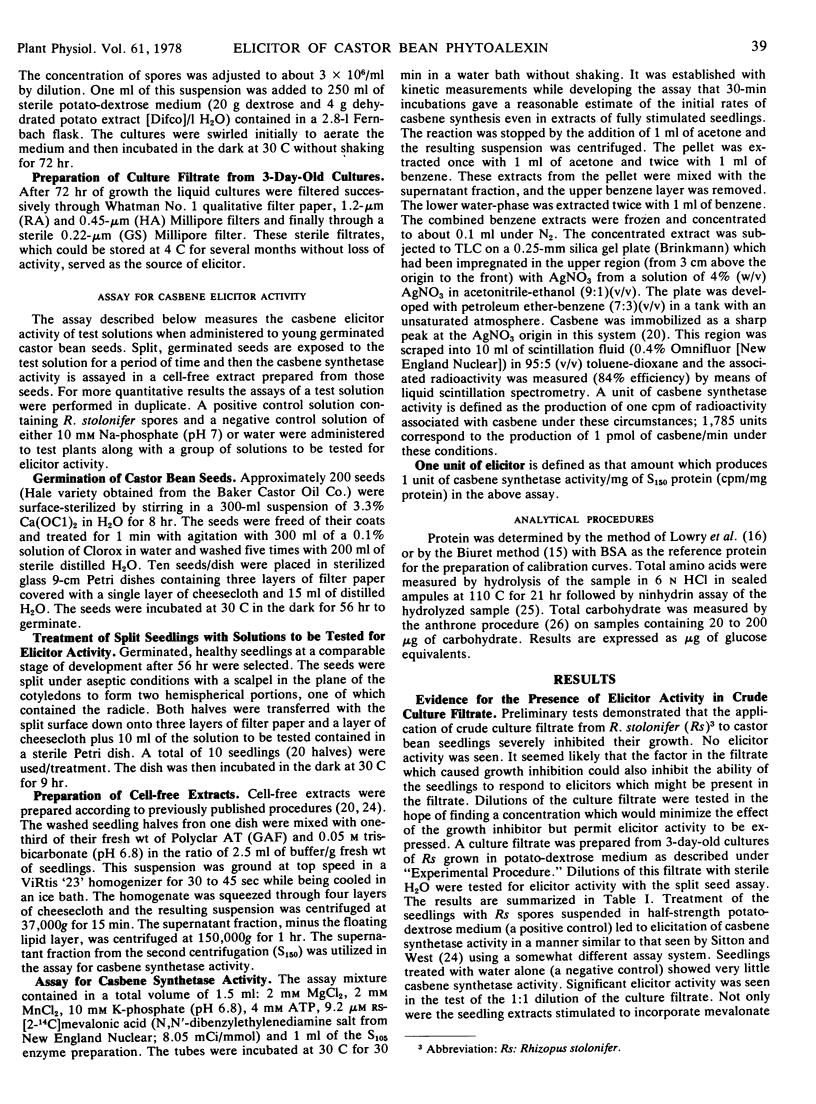
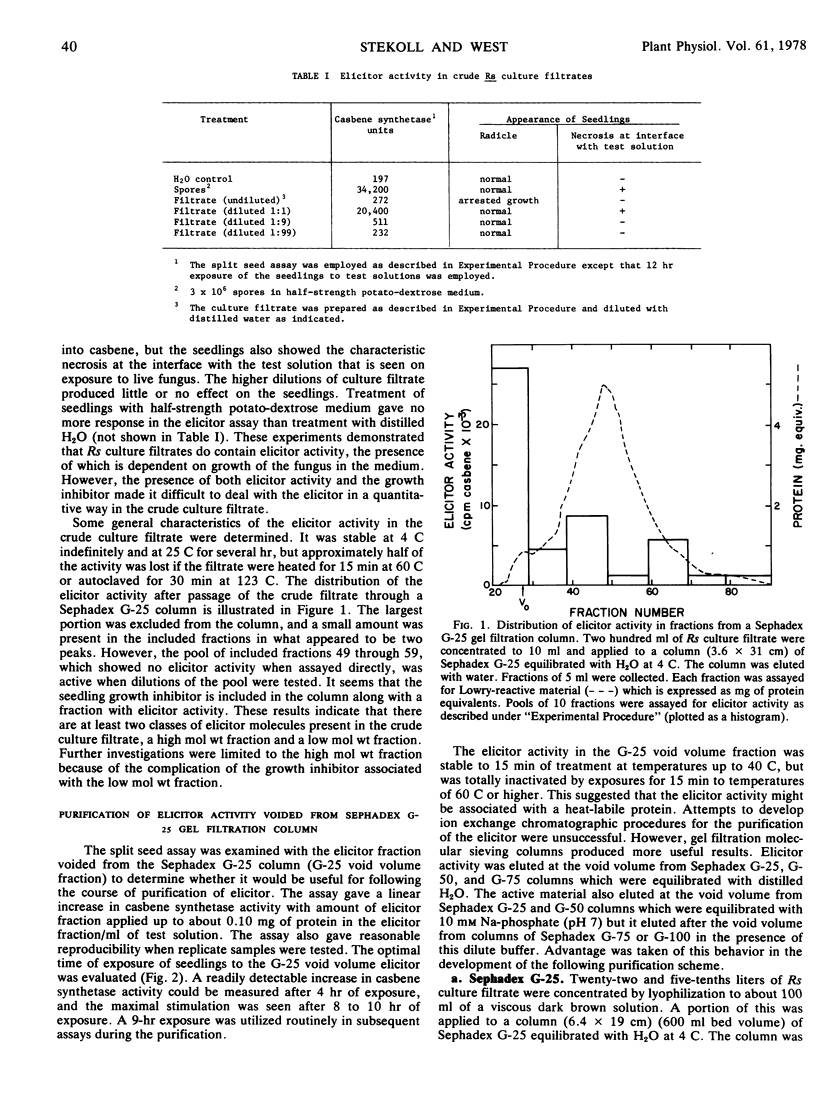
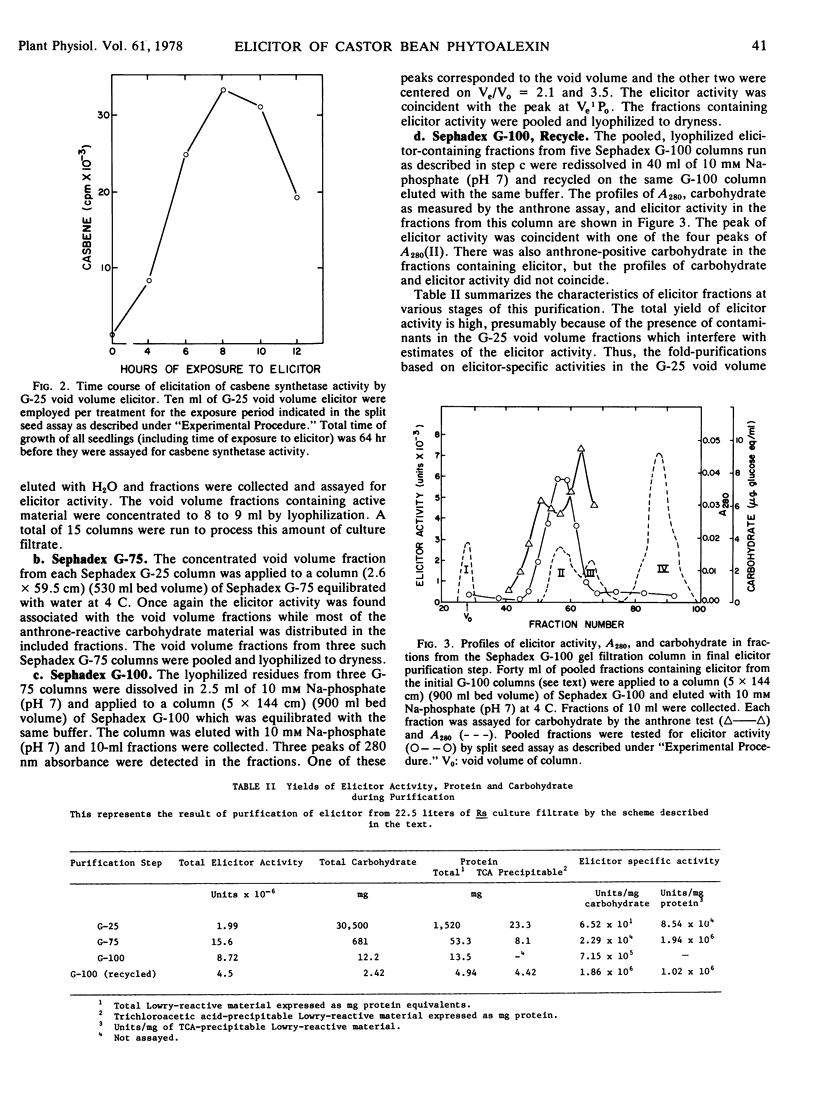
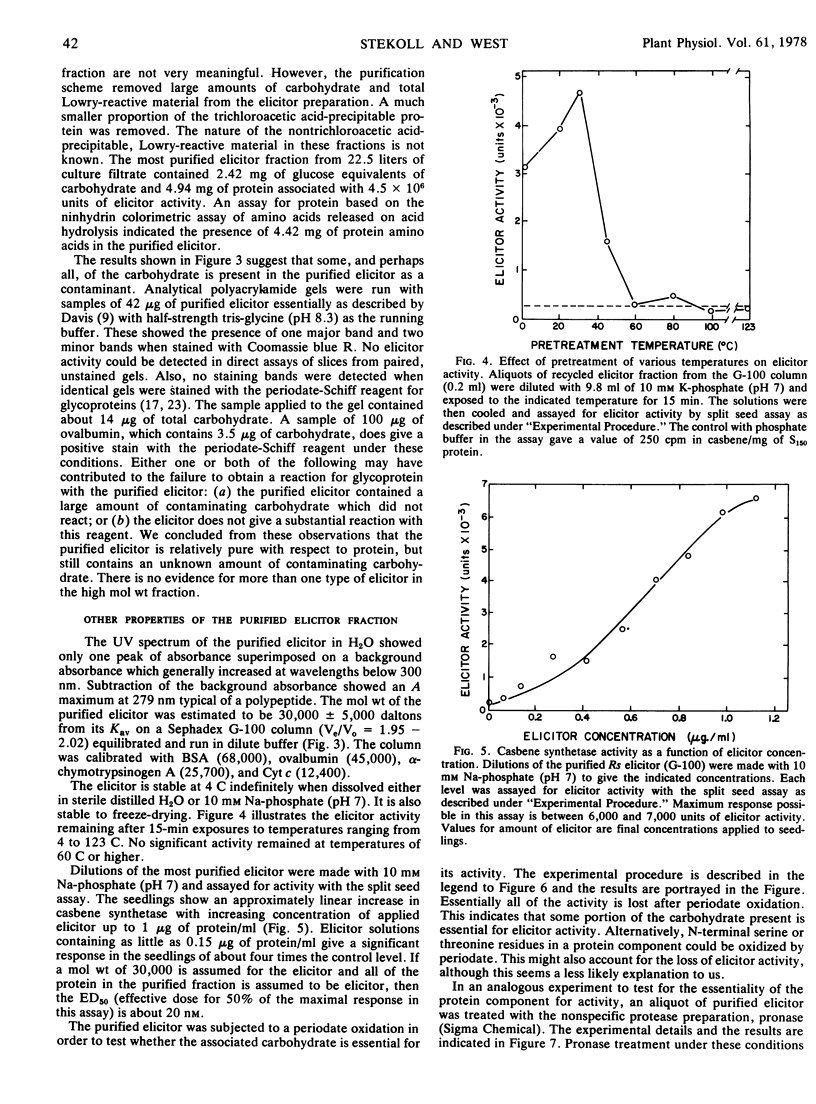
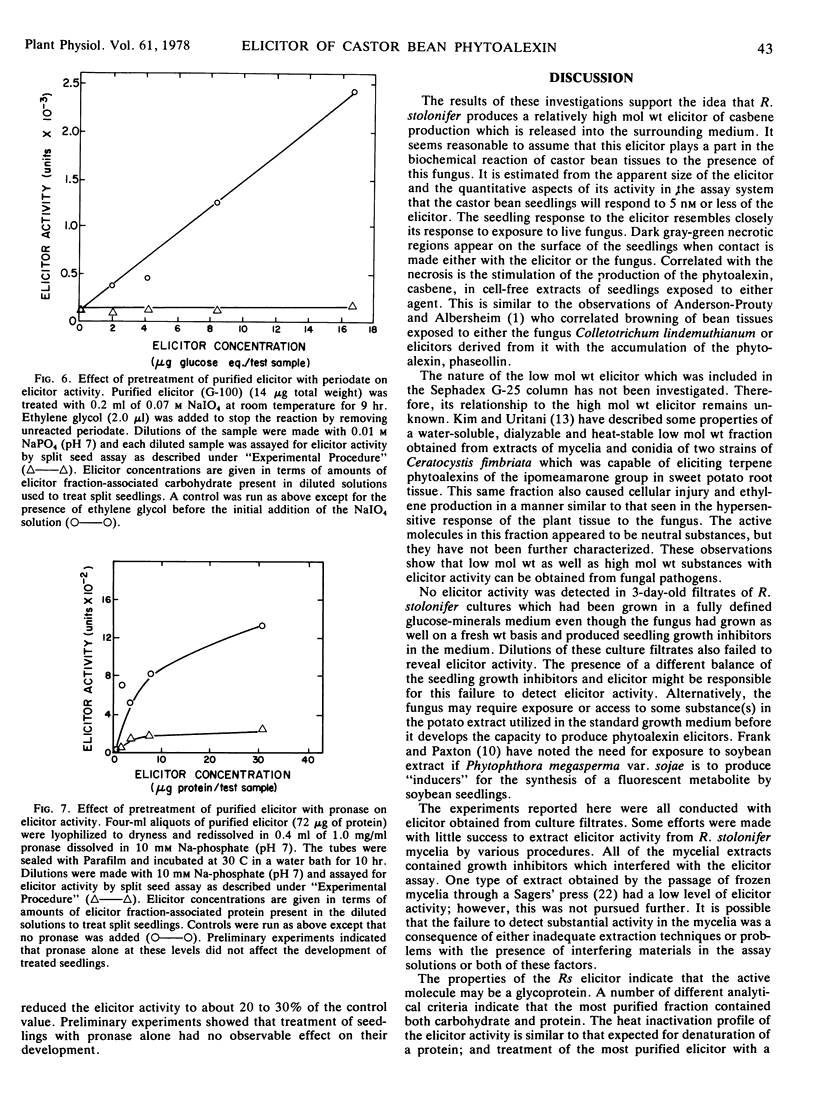
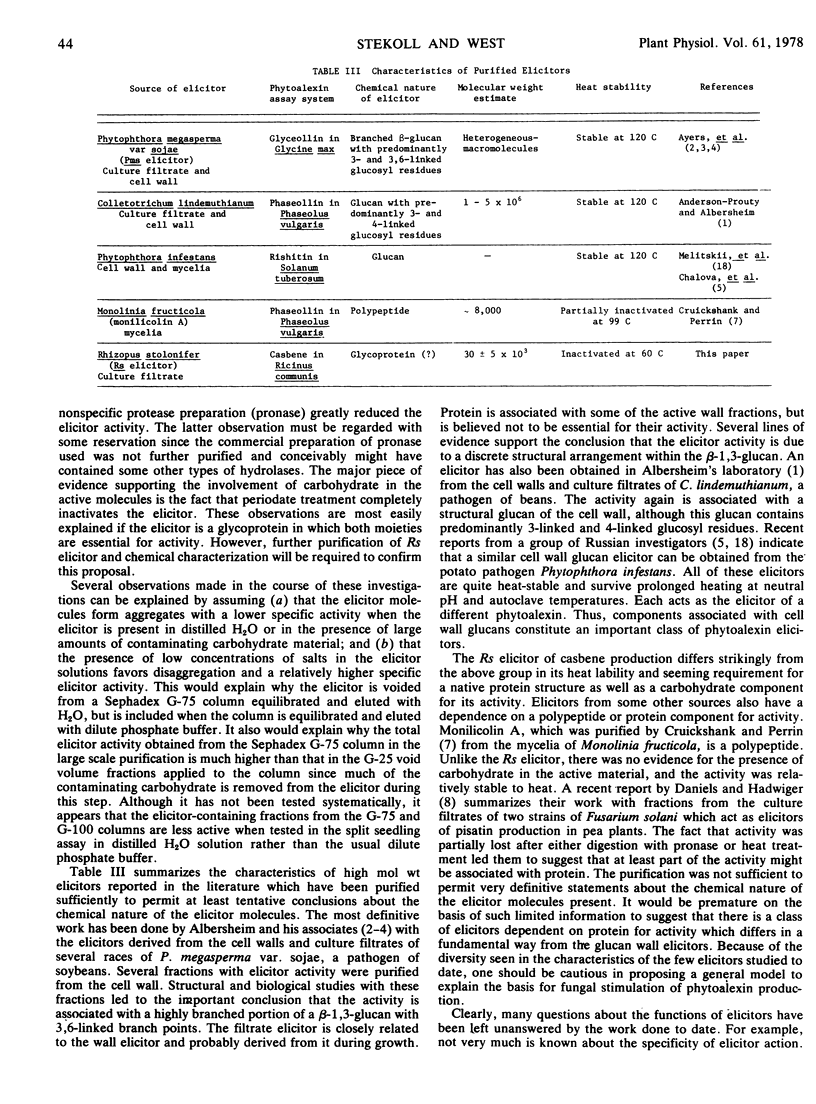
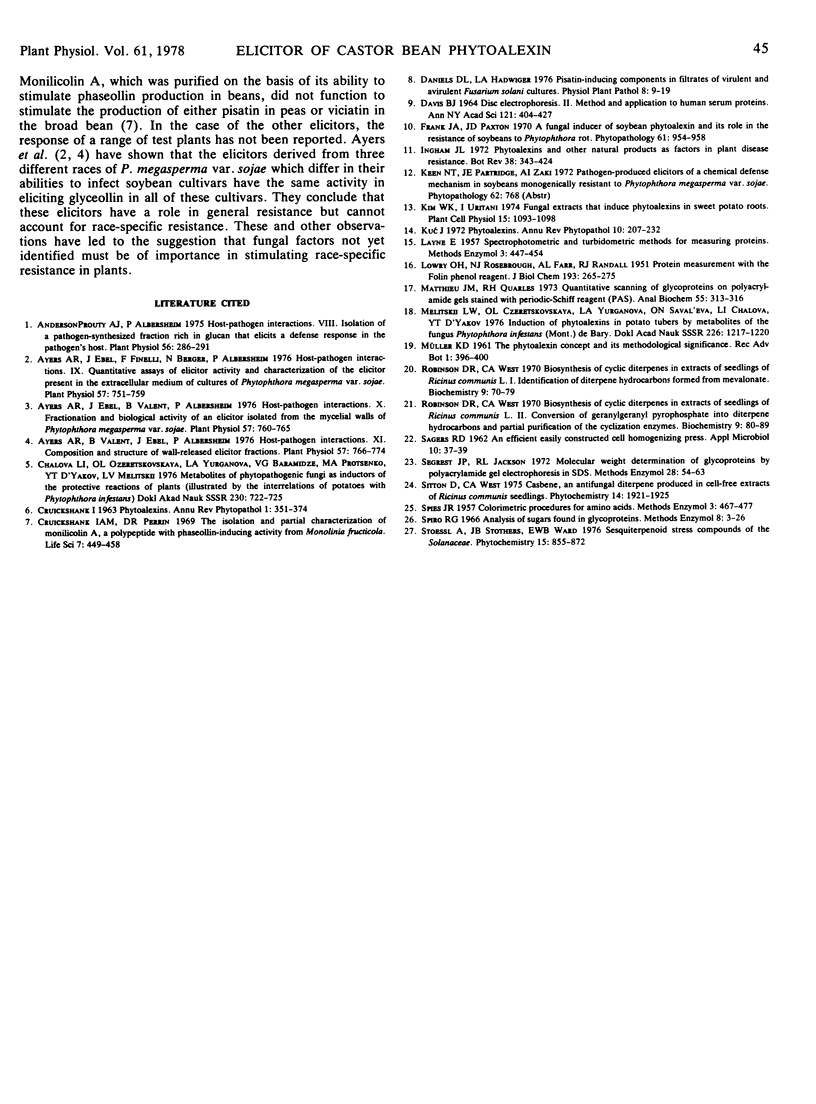
Selected References
These references are in PubMed. This may not be the complete list of references from this article.
- Ayers A. R., Ebel J., Finelli F., Berger N., Albersheim P. Host-Pathogen Interactions: IX. Quantitative Assays of Elicitor Activity and Characterization of the Elicitor Present in the Extracellular Medium of Cultures of Phytophthora megasperma var. sojae. Plant Physiol. 1976 May;57(5):751–759. doi: 10.1104/pp.57.5.751. [DOI] [PMC free article] [PubMed] [Google Scholar]
- Ayers A. R., Ebel J., Valent B., Albersheim P. Host-Pathogen Interactions: X. Fractionation and Biological Activity of an Elicitor Isolated from the Mycelial Walls of Phytophthora megasperma var. sojae. Plant Physiol. 1976 May;57(5):760–765. doi: 10.1104/pp.57.5.760. [DOI] [PMC free article] [PubMed] [Google Scholar]
- Ayers A. R., Valent B., Ebel J., Albersheim P. Host-Pathogen Interactions: XI. Composition and Structure of Wall-released Elicitor Fractions. Plant Physiol. 1976 May;57(5):766–774. doi: 10.1104/pp.57.5.766. [DOI] [PMC free article] [PubMed] [Google Scholar]
- DAVIS B. J. DISC ELECTROPHORESIS. II. METHOD AND APPLICATION TO HUMAN SERUM PROTEINS. Ann N Y Acad Sci. 1964 Dec 28;121:404–427. doi: 10.1111/j.1749-6632.1964.tb14213.x. [DOI] [PubMed] [Google Scholar]
- LOWRY O. H., ROSEBROUGH N. J., FARR A. L., RANDALL R. J. Protein measurement with the Folin phenol reagent. J Biol Chem. 1951 Nov;193(1):265–275. [PubMed] [Google Scholar]
- Matthieu J. M., Quarles R. H. Quantitative scanning of glycoproteins on polyacrylamide gels stained with periodic acid-Schiff reagent (PAS). Anal Biochem. 1973 Sep;55(1):313–316. doi: 10.1016/0003-2697(73)90321-7. [DOI] [PubMed] [Google Scholar]
- Robinson D. R., West C. A. Biosynthesis of cyclic diterpenes in extracts from seedlings of Ricinus communis L. I. Identification of diterpene hydrocarbons formed from mevalonate. Biochemistry. 1970 Jan 6;9(1):70–79. doi: 10.1021/bi00803a010. [DOI] [PubMed] [Google Scholar]
- Robinson D. R., West C. A. Biosynthesis of cyclic diterpenes in extracts from seedlings of Ricinus communis L. II. Conversion of geranylgeranyl pyrophosphate into diterpene hydrocarbons and partial purification of the cyclization enzymes. Biochemistry. 1970 Jan 6;9(1):80–89. doi: 10.1021/bi00803a011. [DOI] [PubMed] [Google Scholar]
- SAGERS R. D. An efficient, easily constructed cell homogenizing press. Appl Microbiol. 1962 Jan;10:37–39. doi: 10.1128/am.10.1.37-39.1962. [DOI] [PMC free article] [PubMed] [Google Scholar]


